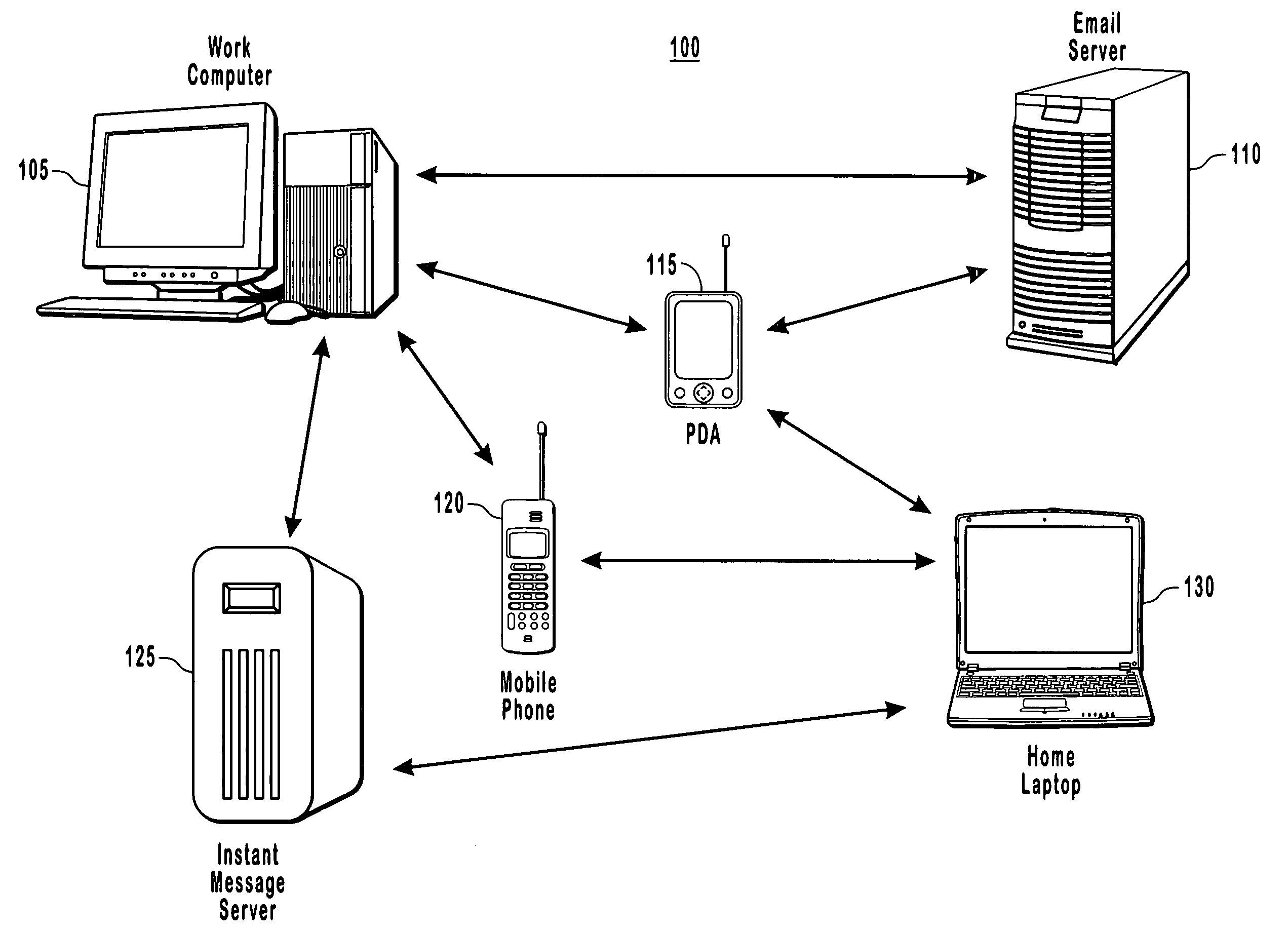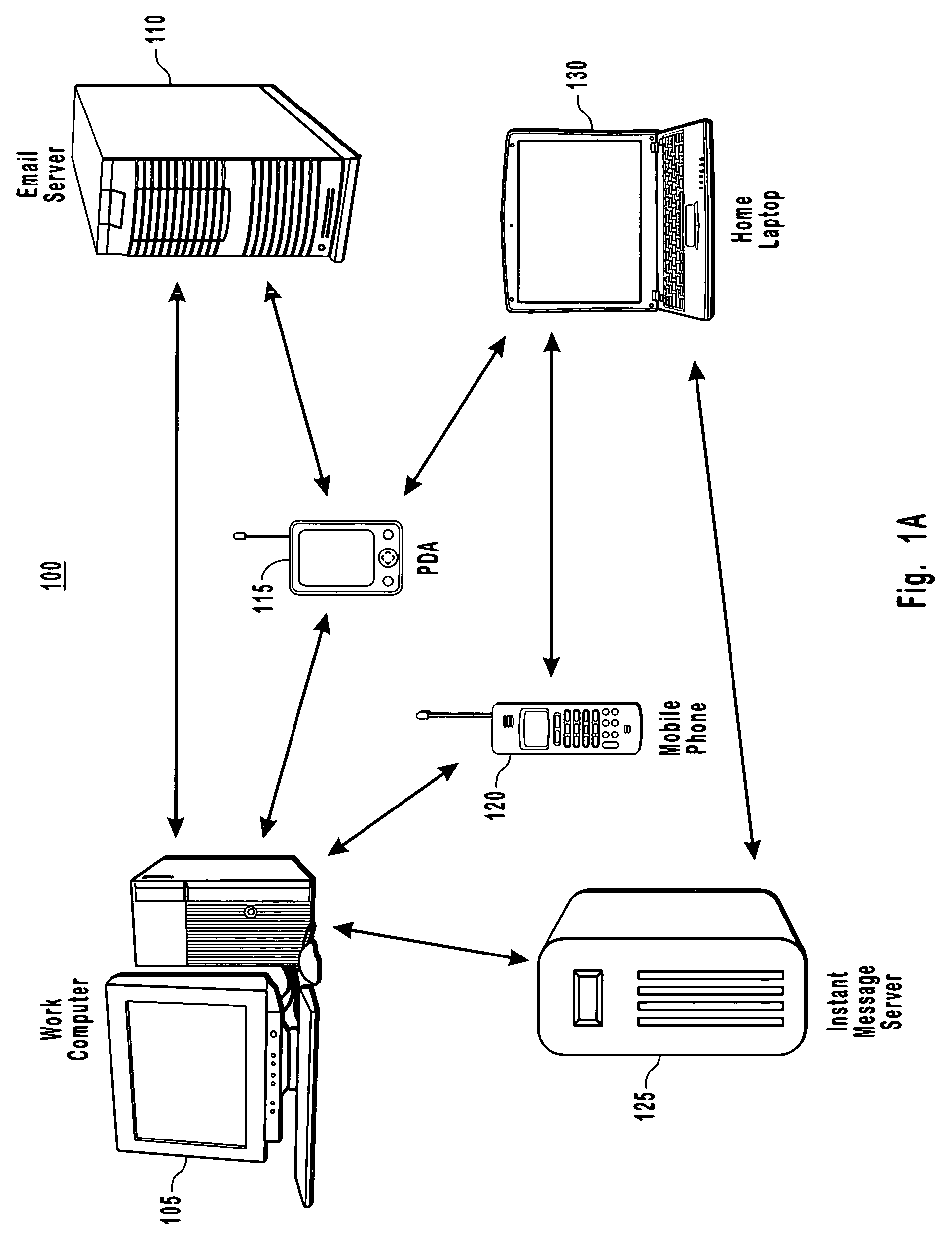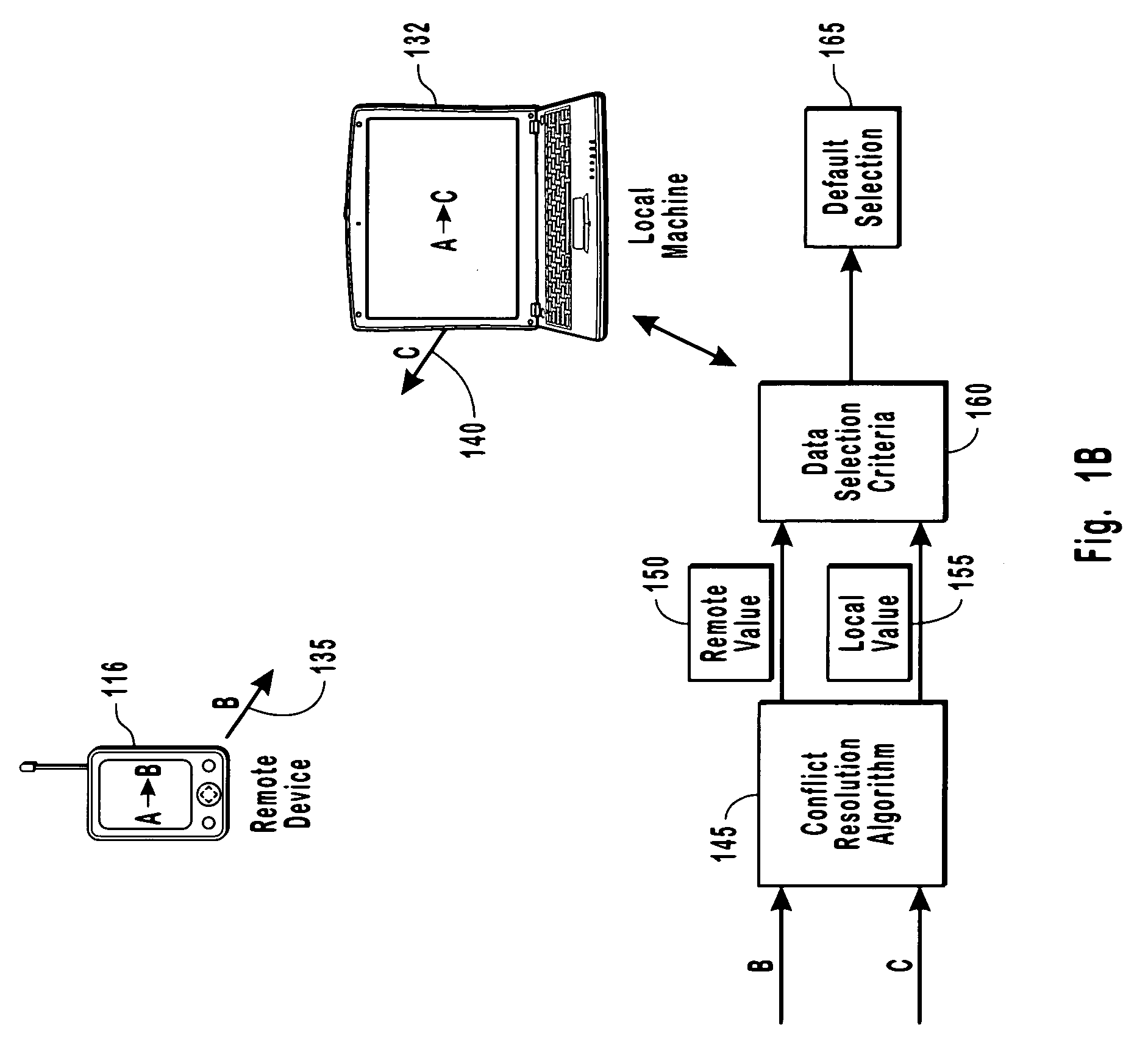Methods and systems for halting synchronization loops in a distributed system
a distributed system and synchronization loop technology, applied in the field of synchronizing data within a distributed computer system, can solve the problems of limited physical resources, inability to maintain time date information, and inability to synchronize, so as to reduce the likelihood of potentially infinite synchronization loops
- Summary
- Abstract
- Description
- Claims
- Application Information
AI Technical Summary
Benefits of technology
Problems solved by technology
Method used
Image
Examples
Embodiment Construction
[0024] The present invention extends to methods, systems and computer program products for consistent resolution of data conflicts when synchronizing data between devices in a distributed computing system in order to reduce the likelihood of a potentially infinite synchronization loop. The embodiments of the present invention may comprise a special purpose or general-purpose computer including various computer hardware, as discussed in greater detail below.
[0025] A heterogeneous peer to peer network or a distributed computing system is a network that has different software running on different nodes of the network. Being a distributing computing system or peer to peer network means that there is no single server with a “master” copy of data that can be used to resolve discrepancies-or conflicts. Such a network topology of computers can cause synchronization loops if synchronization is done incorrectly. Depending on how conflicts are resolved, synchronizing loops can be essentially ...
PUM
 Login to View More
Login to View More Abstract
Description
Claims
Application Information
 Login to View More
Login to View More - R&D
- Intellectual Property
- Life Sciences
- Materials
- Tech Scout
- Unparalleled Data Quality
- Higher Quality Content
- 60% Fewer Hallucinations
Browse by: Latest US Patents, China's latest patents, Technical Efficacy Thesaurus, Application Domain, Technology Topic, Popular Technical Reports.
© 2025 PatSnap. All rights reserved.Legal|Privacy policy|Modern Slavery Act Transparency Statement|Sitemap|About US| Contact US: help@patsnap.com



